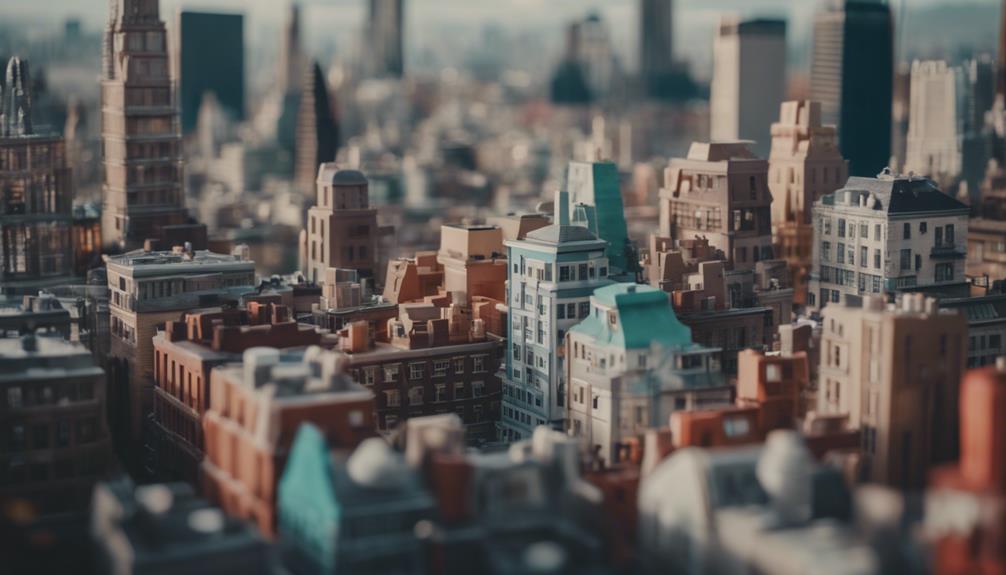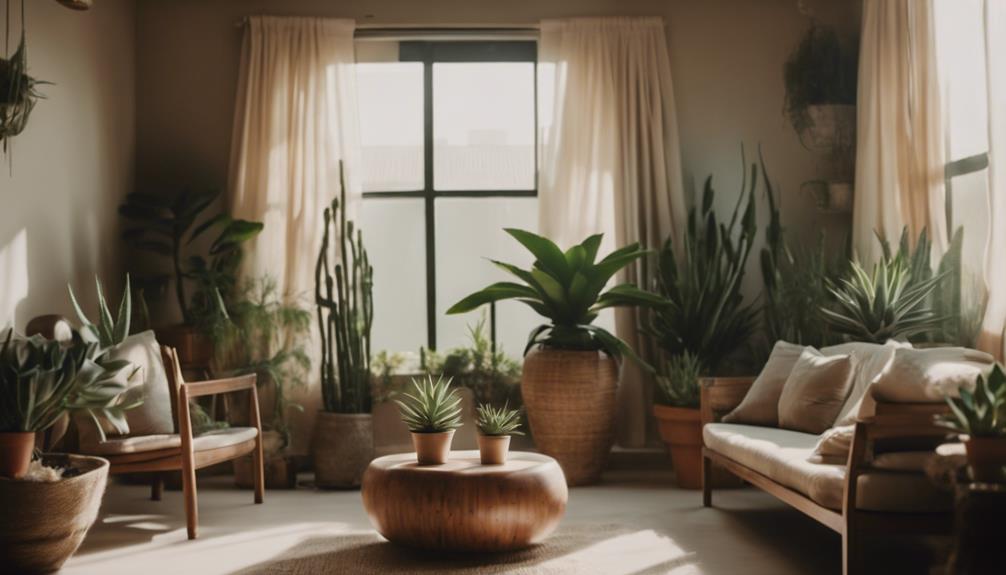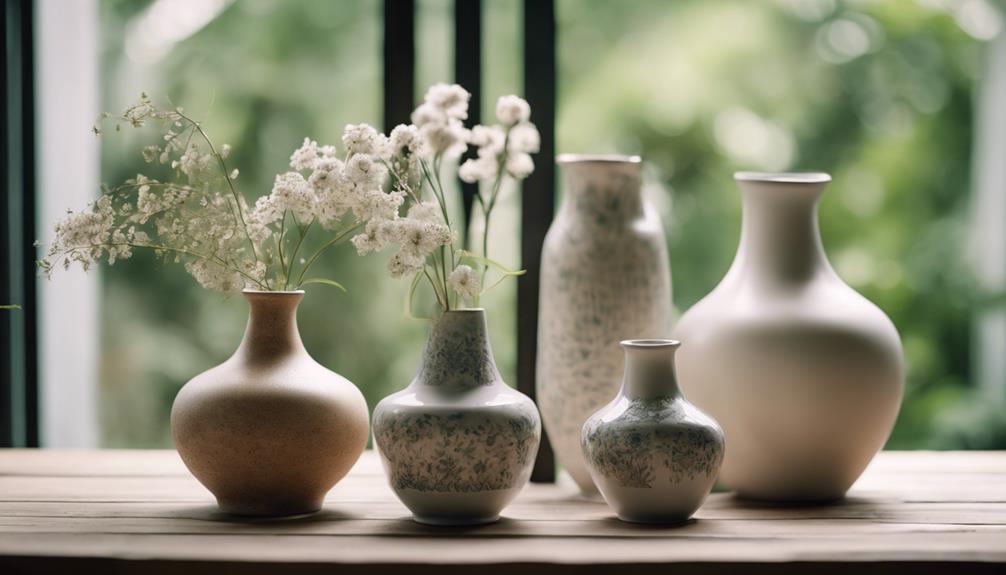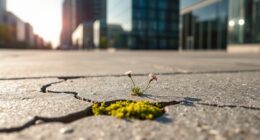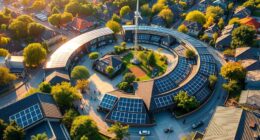Architects worldwide are pushing boundaries with eclectic designs, reshaping skylines with bold structures. Twisting towers, futuristic voids, and iconic pools captivate. Unconventional shapes challenge norms, blending modern and historic elements. Urban landscapes now boast unique structures mixing innovative materials. Skyline creativity in Dubai, Singapore, and Shanghai highlights the trend. Architects infuse new perspectives with dazzling elements creating visually striking landmarks. To explore more about these architectural marvels, continue discovering the fusion of art and boldness that defines modern cityscapes.
Key Takeaways
- Architects blend traditional and modern styles creatively.
- Eclectic designs redefine urban landscapes globally.
- Sustainability and innovation drive unconventional structures.
- Unique shapes and materials reshape city skylines.
- Urban architecture showcases individuality and creativity.
Bold Architectural Innovations
Architects are boldly pushing boundaries with innovative designs that redefine traditional architecture norms. Take, for instance, the twisting Torre Glòries in Barcelona, soaring to a height of 144 meters. Its unconventional form challenges the conventional skyscraper silhouette, making a bold statement in the city's skyline.
Moving on to the Opus Tower in Dubai, designed by the late Zaha Hadid, its flowing glass façade and unique void at the center create a futuristic aesthetic that breaks away from the ordinary.
In Singapore, the Marina Bay Sands, a creation of Moshe Safdie, captivates with its iconic rooftop infinity pool, offering breathtaking views of the cityscape. Meanwhile, the CCTV Headquarters in Beijing, known for its daring cantilevered design, defies gravity with its unconventional architecture, earning it the nickname 'Big Pants.'
Eventually, the Heydar Aliyev Center in Baku, Azerbaijan, designed by Zaha Hadid, showcases fluid lines and futuristic curves that challenge traditional architectural norms, leaving a lasting impression on all who behold it.
Breaking Design Norms

Breaking away from traditional design norms, the eclectic style movement in architecture embraces experimentation and creativity to reshape city skylines. Architects are pushing boundaries by incorporating eclectic styles such as biomimicry, fusion of cultures, and innovative materials. This departure from uniformity is evident in the unique facades, unconventional shapes, and sustainable features that are now defining modern buildings. By blending historical elements with modern technologies, designers are creating visually striking and functional structures that challenge conventional perceptions of architecture.
To visualize this design revolution, imagine a contrast between traditional and eclectic architectural elements:
| Traditional Design | Eclectic Style |
|---|---|
| Symmetrical facades | Unique facades with mixed materials |
| Rectangular shapes | Unconventional and asymmetrical shapes |
| Classic building materials | Innovative and sustainable materials |
| Uniform architectural styles | Blend of historical and modern design elements |
Redefining Urban Landscapes
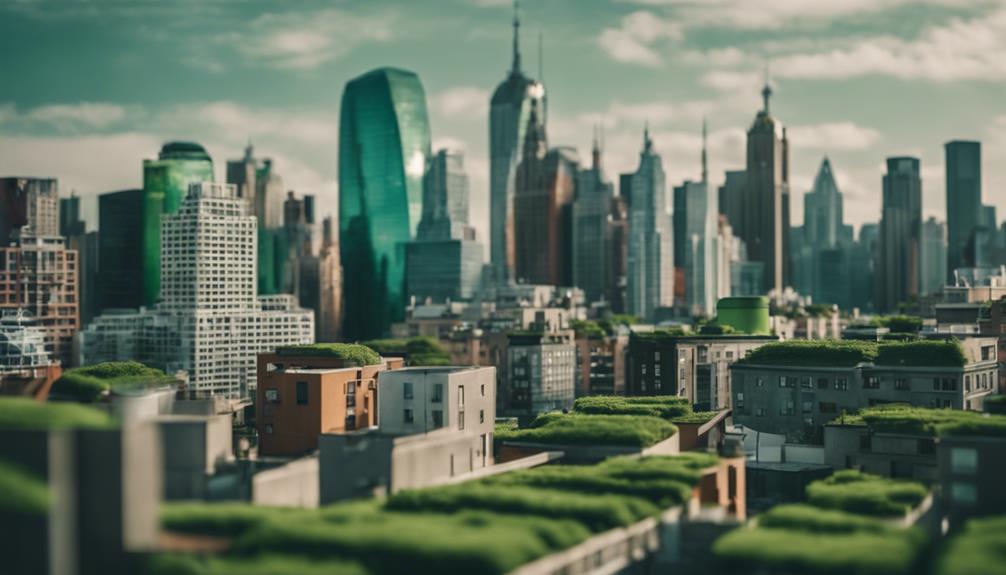
With bold and innovative designs, the eclectic style movement is reshaping urban landscapes, combining elements from various architectural styles to create unique and eye-catching buildings. Embracing diversity and creativity, this style breaks away from traditional norms to bring new life and energy to city skylines.
By blending different architectural influences, these architects challenge conventional ideas of building aesthetics and push design boundaries. The eclectic approach allows for a mix of materials, shapes, and colors, resulting in structures that stand out and make a statement. Urban landscapes are transformed into vibrant, dynamic environments that reflect the innovative and daring spirit of modern architecture through the work of these eclectic architects.
- Structures with a fusion of classic and modern architectural elements dot the cityscape.
- Bold colors and unconventional shapes create a visually stimulating environment.
- Contrasting materials like glass, steel, and wood add depth and texture to buildings.
- Rooftop gardens and terraces offer green spaces within the urban jungle.
- Innovative use of lighting highlights architectural features and enhances nighttime cityscapes.
Unique City Skylines

Several cities around the world boast distinct and innovative skylines shaped by cutting-edge architectural designs. Dubai, Singapore, and Shanghai stand out with their avant-garde approach to cityscapes. The Burj Khalifa in Dubai, Marina Bay Sands in Singapore, and the Shanghai Tower redefine traditional notions of urban architecture.
By blending futuristic elements with cultural influences, these cities create visually striking skylines that captivate residents and visitors alike. Architects in these cities push the boundaries of conventional design by incorporating unconventional shapes, materials, and sustainable features into their projects. This fusion of creativity and functionality not only redefines urban landscapes but also sets new standards for architectural expression globally.
The eclectic styles found in these city skylines symbolize a broader trend towards embracing creativity and boldness in shaping the future of urban environments. As these cities continue to innovate and experiment, their skylines serve as proofs to the limitless possibilities of architectural design.
Pushing Boundaries Creatively

Architects are creatively expanding horizons by incorporating diverse styles, materials, and forms in their cutting-edge designs. This innovative approach is reshaping skylines worldwide, pushing the boundaries of traditional architectural norms.
Here are five ways architects are pushing boundaries creatively:
- Introducing bold and unconventional elements into their designs, creating visually striking buildings that stand out in cityscapes.
- Seamlessly blending traditional and modern architectural styles to form unique and harmonious structures.
- Challenging conventional norms by daring to experiment with new materials and forms, leading to groundbreaking architectural solutions.
- Redefining the possibilities of architectural expression by incorporating eclectic influences from various cultural, historical, and artistic sources.
- Fusing diverse cultural elements to create dynamic and alluring architectural masterpieces that mesmerize the imagination and redefine urban landscapes.
Architectural Diversity in Skylines
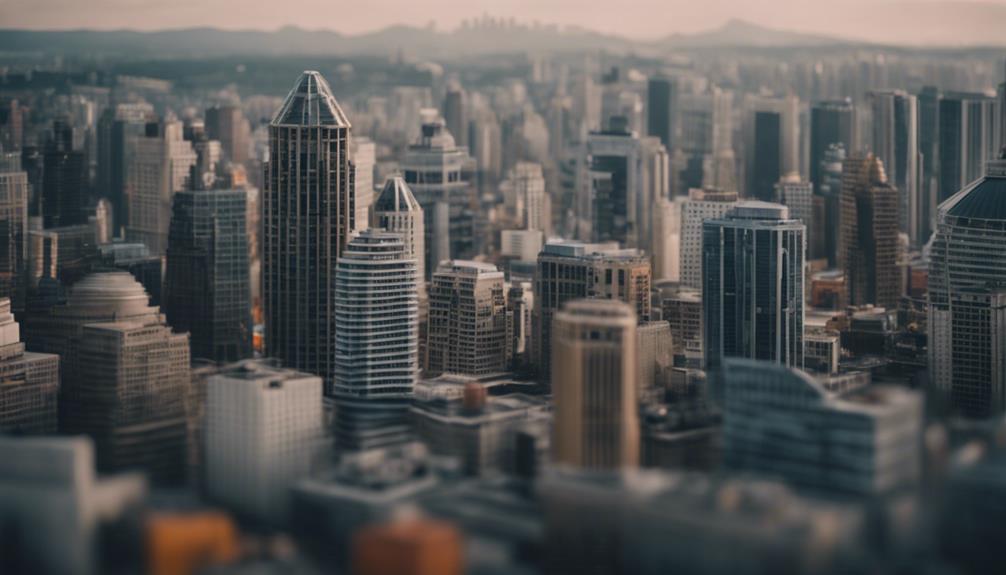
You can observe a dynamic shift in skyline design trends, with architects embracing a mix of traditional and modern elements to create visually striking cityscapes.
This urban architectural innovation showcases a vibrant blend of materials, shapes, and colors that contribute to the unique identity of each city.
Skyline Design Trends
A myriad of architectural styles converge in skylines worldwide, showcasing a vibrant tapestry of design trends that redefine urban landscapes. Cities like Dubai, Shanghai, and Singapore epitomize this trend, blending modern, traditional, and innovative designs to create unique skyline identities.
This architectural diversity not only reflects the cultural, social, and economic dynamics of a city but also serves as a magnet for tourists and investors seeking new experiences and opportunities. The current trend towards eclectic skyline designs emphasizes creativity, sustainability, and functionality in urban development, pushing boundaries and challenging traditional norms.
Collaborations between renowned architects and local designers play an essential role in shaping the rich tapestry of architectural styles that define modern skylines.
- Futuristic skyscrapers meeting historic landmarks
- Sustainable green buildings integrated into urban landscapes
- Innovative structures featuring cutting-edge technology
- Cultural influences evident in architectural motifs and materials
- Collaborative projects blending global design perspectives
Urban Architectural Innovation
In the ever-evolving landscape of urban architecture, a fusion of diverse styles, materials, and forms is reshaping skylines worldwide. Cities are breaking away from traditional design constraints, opting for a mix of architectural elements that create visually striking and unique cityscapes.
Embracing eclectic architectural designs allows cities to differentiate themselves, reflecting their individual identities and fostering a sense of creativity in urban planning.
The trend towards urban architectural innovation challenges longstanding norms, encouraging architects to experiment with historical influences, modern techniques, and cultural expressions. This blend of styles not only transforms skylines but also adds a dynamic and vibrant dimension to urban environments.
By incorporating a diverse range of architectural features, cities are reshaping their identities and creating visually engaging spaces that captivate residents and visitors alike.
The shift towards eclectic styles in urban architecture isn't just a passing trend; it represents a fundamental change in how cities approach design, emphasizing the importance of creativity and individuality in shaping the modern skyline.
Unconventional Urban Structures

You'll notice that unique architectural designs are becoming increasingly prominent in urban landscapes, challenging the traditional norms.
These innovative structures incorporate bold shapes and unconventional forms, reshaping city skylines in creative ways.
Architects are pushing boundaries to create visually striking landmarks that redefine the urban environment.
Unique Architectural Designs
Pushing the boundaries of traditional architecture, unconventional urban structures showcase striking designs that challenge the norm. These unique buildings often incorporate innovative materials, shapes, and technologies to stand out in city skylines. Architects behind these designs push boundaries and create iconic landmarks that capture attention and spark imagination. Unconventional urban structures can serve various functions, from residential and commercial spaces to cultural centers and public art installations. These architectural marvels contribute to the diversity and vibrancy of city landscapes, attracting tourists and locals alike with their mesmerizing designs.
- Glass facades that twist and turn, creating optical illusions as sunlight hits them.
- Buildings shaped like giant animals or abstract sculptures, adding whimsy to the cityscape.
- Structures with green roofs that double as urban gardens, promoting sustainability.
- Floating buildings that appear to defy gravity, challenging conventional construction methods.
- Interactive installations that change color, shape, or size in response to environmental factors, engaging passersby in a dynamic experience.
Urban Structural Innovations
Architects are revolutionizing city skylines with cutting-edge designs that defy traditional architectural norms through urban structural innovations.
Unconventional urban structures are reshaping skylines worldwide by challenging traditional architectural boundaries with unique shapes, materials, and functions. From twisting towers to cantilevered structures and eco-friendly designs, these buildings not only stand out as landmarks but also contribute to sustainable urban development and efficient land use.
The trend of unconventional urban structures isn't just about aesthetics; it's about pushing the boundaries of what's possible in architecture while also addressing the practical needs of urban environments. By incorporating innovative designs that blend art, architecture, and urban living, architects are creating a new era of cityscapes that captivate the imagination and redefine the skyline.
This fusion of creativity and functionality isn't only transforming skylines but also shaping the way we perceive and interact with urban spaces.
Creative City Skylines
Unconventional urban structures in creative city skylines are redefining traditional architectural norms with their innovative designs and unique shapes. These buildings captivate the eye and challenge conventional skyscraper aesthetics through their distinctive features:
- The twisted Cayan Tower in Dubai, boasting a remarkable 90-degree twist, stands as a proof to architectural ingenuity.
- The Basket Building in Ohio, resembling a colossal picnic basket, serves as a quirky yet iconic landmark in the city.
- The Dancing House in Prague, a creation by Frank Gehry, juxtaposes modern abstract design against its historic backdrop.
- The Atomium in Brussels, magnifying an atom 165 billion times, offers a futuristic and iconic addition to the city's skyline.
- The CCTV Headquarters in Beijing, with its looped shape and innovative design, pushes the boundaries of traditional skyscraper architecture, leaving a lasting impression on all who behold it.
Fresh Perspectives on Cityscapes

Experience a new vantage point on cityscapes with the infusion of fresh perspectives in architecture. Architects today are reshaping urban skylines by incorporating diverse styles such as neomodernism, parametricism, and biomimicry. These innovative approaches blend technology, sustainability, and creative designs to produce visually striking buildings that challenge traditional norms.
The eclectic style seen in cityscapes pushes boundaries in form, function, and aesthetics, leading to the evolution of urban landscapes with bold and imaginative structures.
This shift towards fresh perspectives reflects the creativity and vision of architects who are constantly pushing the limits of design. By fusing art, engineering, and culture, the eclectic approach to cityscapes transforms the way we perceive and interact with urban environments.
The infusion of new architectural perspectives not only enhances the visual appeal of cities but also creates spaces that inspire and captivate individuals, offering a unique and dynamic experience in the heart of bustling metropolises.
The Evolution of Urban Architecture

Embracing a fusion of diverse influences and materials, urban architecture has undergone a significant evolution towards eclectic designs that redefine skylines worldwide. Architects are pushing boundaries with unique shapes, innovative materials, and sustainable practices to create visually striking buildings.
The eclectic style in urban architecture is reshaping skylines by adding diversity and character to cityscapes around the world. This trend reflects a shift towards individuality and creativity in architectural design, breaking away from uniformity and conformity.
The evolution of urban architecture is driven by a desire to create iconic landmarks that capture the spirit and identity of modern cities.
- Designs blend different influences and materials
- Architects push boundaries with unique shapes
- Innovative materials are being used
- Sustainable practices are integrated into designs
- Urban architecture adds diversity and character to cityscapes
Frequently Asked Questions
Why Is Architecture No Longer Beautiful?
Architecture isn't devoid of beauty; it's now about merging functionality with sustainability. Modern designs prioritize efficiency and innovation. Unconventional styles challenge norms. Clean lines and practicality shine. Beauty adapts to serve society's needs.
Why Was America More Receptive to Eclecticism Than Europe?
In America, you embraced eclecticism more than Europe because your architectural canvas was blank, like a painter's fresh palette. With freedom from historical shackles, you painted vibrant landscapes of creativity and individuality.
What Style Was Modern Architecture Reacting Against?
Modern architecture was reacting against the ornate and decorative styles of the 19th century. It embraced simplicity, minimalism, and functionality, rejecting excessive ornamentation. Architects used new materials like steel, glass, and concrete, focusing on clean lines and open spaces.
What Is an Example of Eclecticism?
An example of eclecticism is the Galleria Vittorio Emanuele II in Milan, Italy. It combines Renaissance, Baroque, and Art Nouveau influences to create a visually stunning architectural masterpiece that reflects a mix of historical and contemporary design elements.
Conclusion
So next time you look up at the city skyline, remember that architects are the artists shaping our urban landscapes like a sculptor crafting a masterpiece.
Embrace the eclectic mix of styles and structures that push the boundaries of design, creating a visually stimulating and dynamic cityscape that reflects the creativity and innovation of our time.
Keep your eyes open for the next architectural wonder that will leave you in awe!

